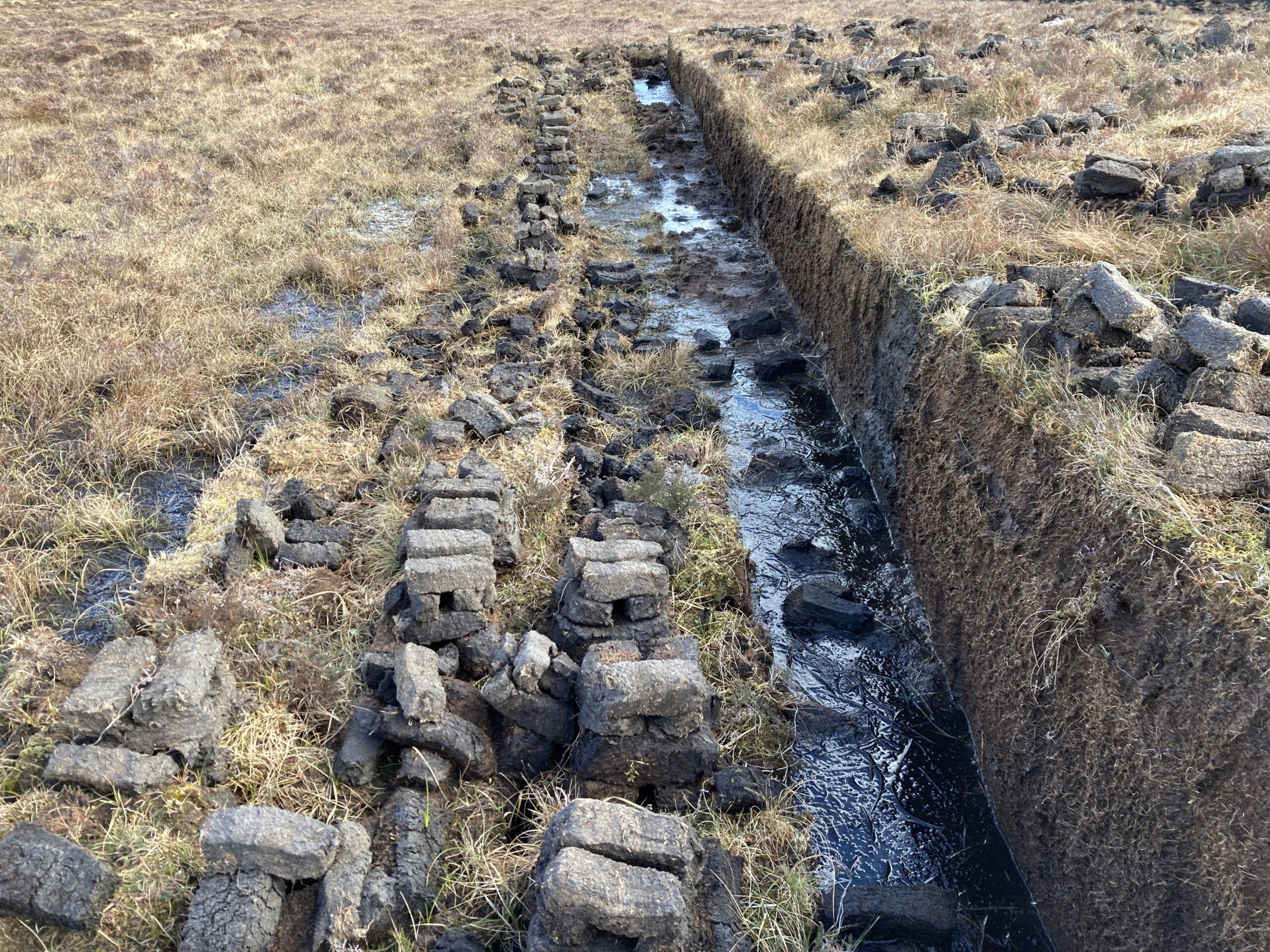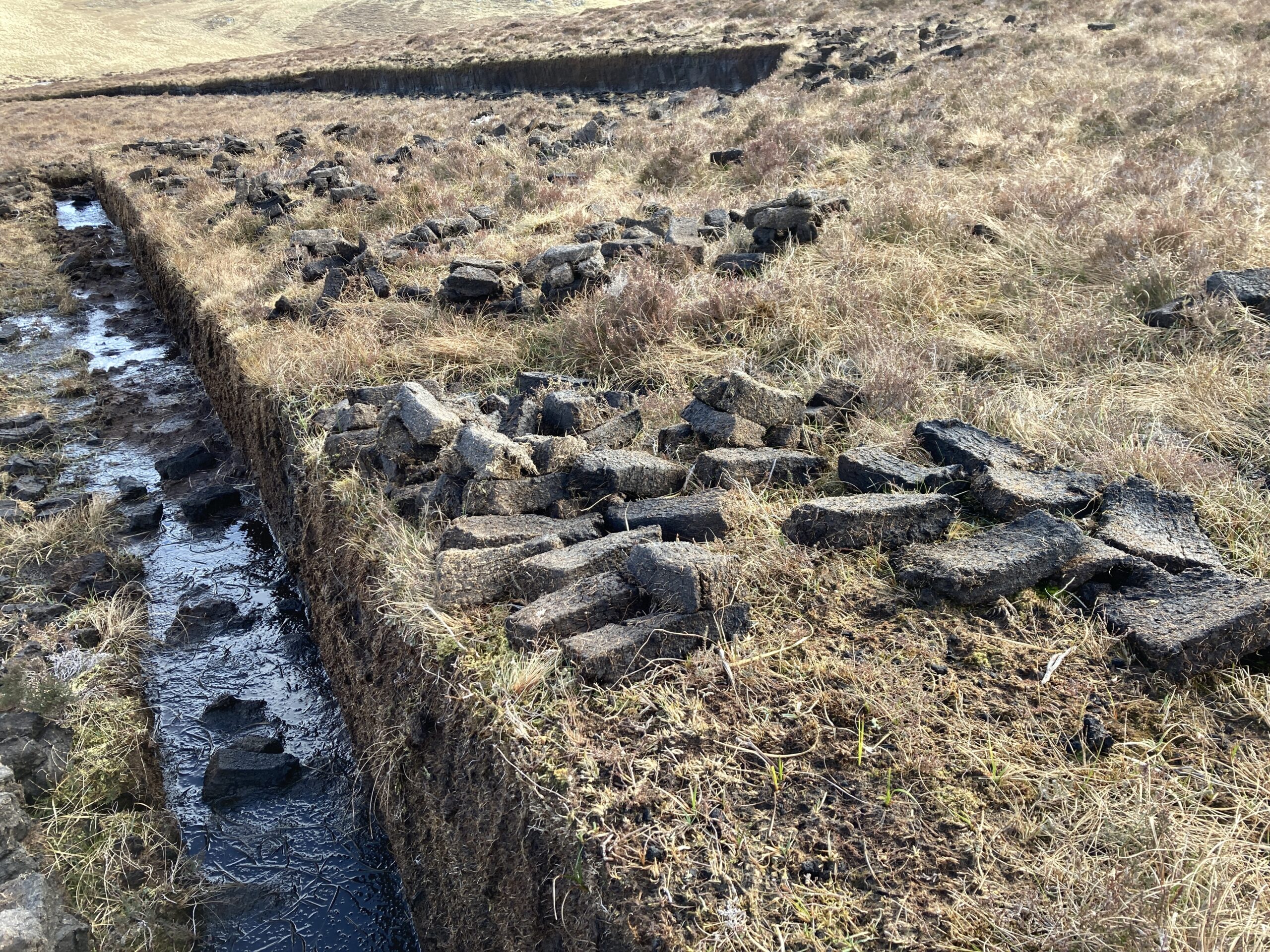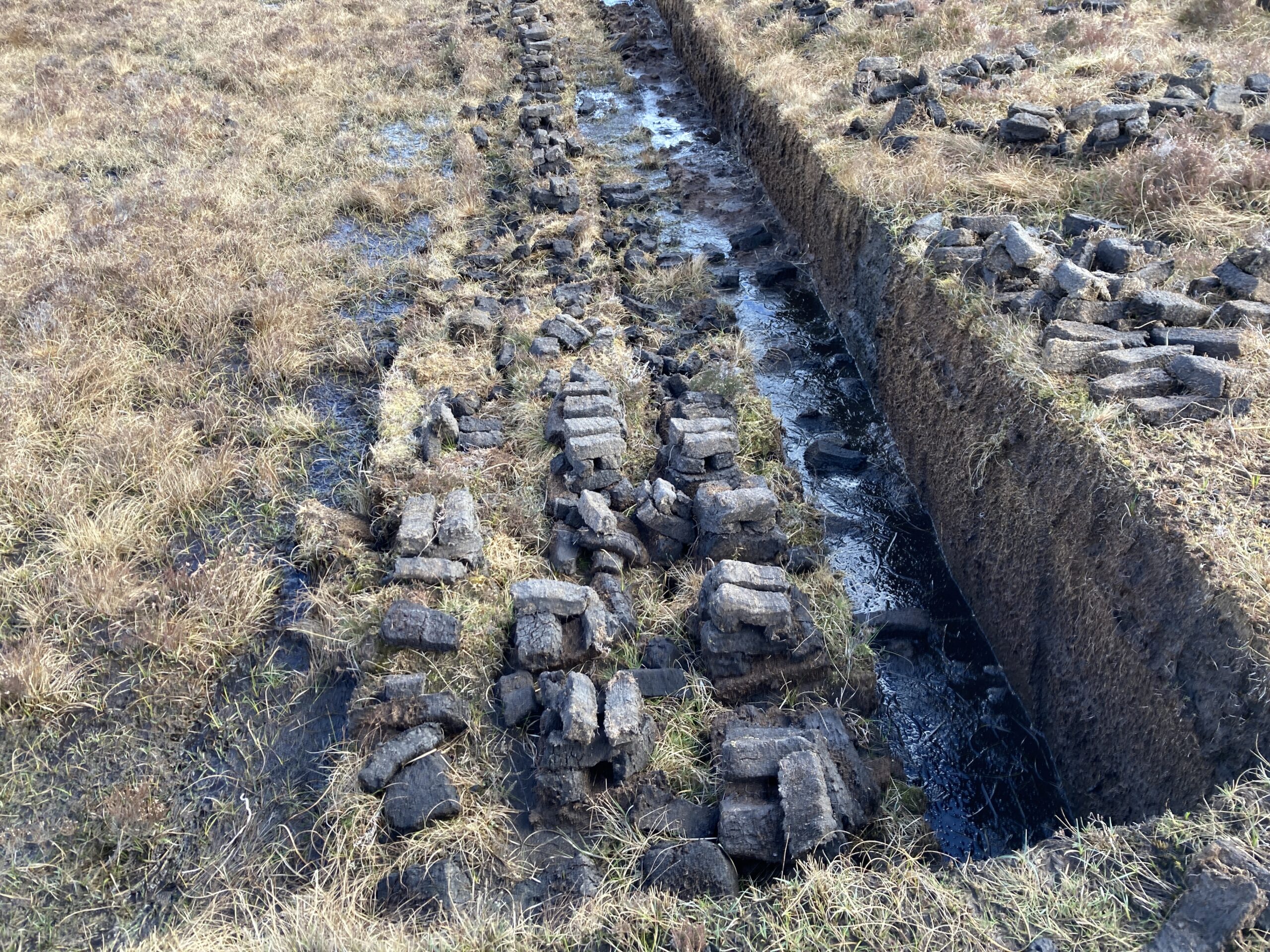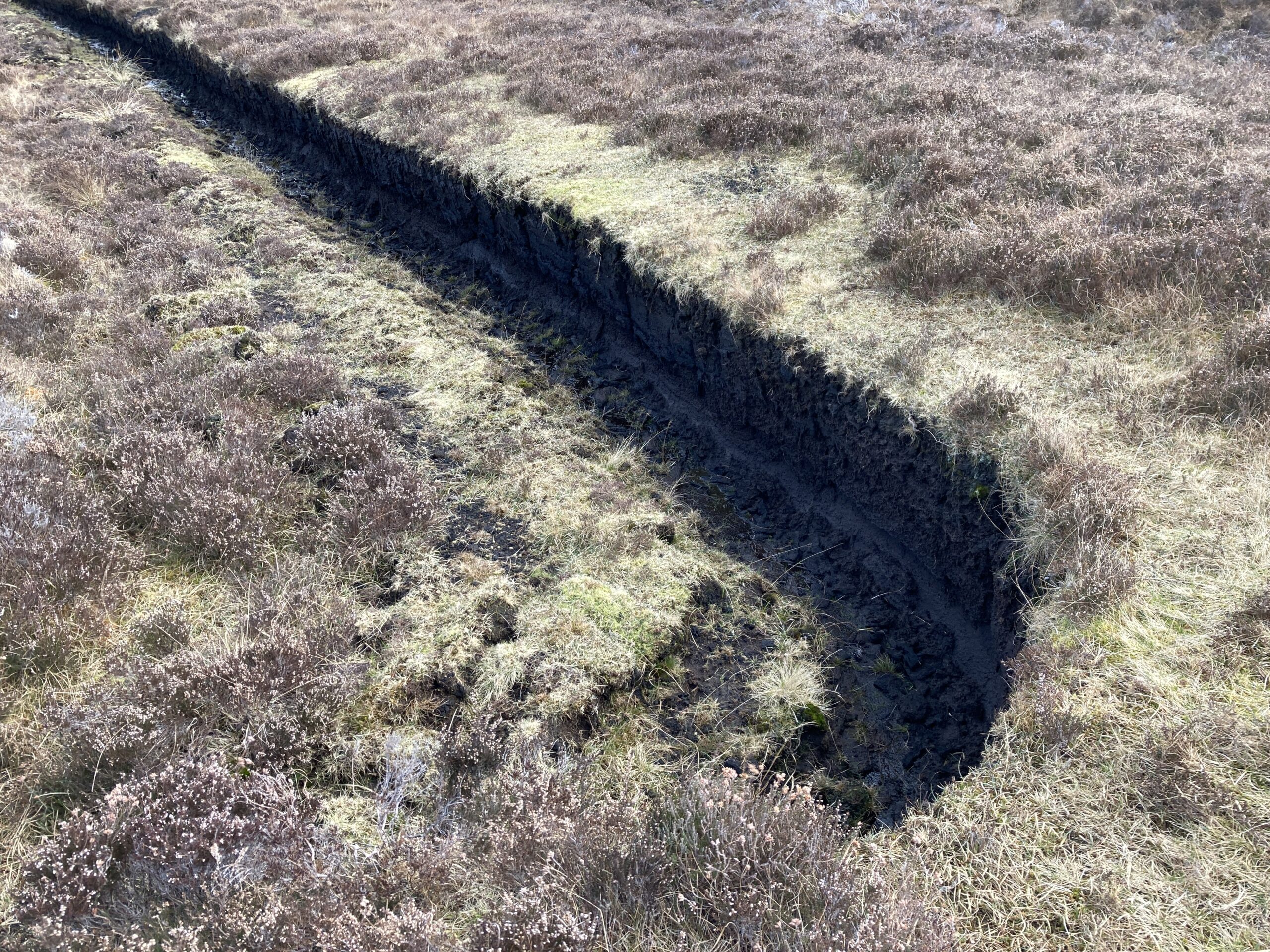



Peat on the Western Isles
Peat is formed through the accumulation of dead plant material, primarily mosses and heather. The damp, acidic conditions of the peatlands slow down the decay process, allowing the plant material to build up over time and eventually become peat.
Peat is a valuable resource on the Western Isles, where it has been used for centuries as a fuel source and for horticulture. To farm peat, people typically use a tool called a peat iron to cut blocks of peat from the surface of the peat bog. These blocks are then left to dry for several weeks, either in the sun or in a peat shed, before being used as fuel or for gardening.
In recent years, the practice of peat cutting has become more controversial due to concerns about its impact on the environment. Peatlands play a crucial role in storing carbon, and cutting or burning peat can release this carbon into the atmosphere, contributing to climate change. In addition, peatlands are important habitats for a variety of plants and animals, including rare and endangered species.
To address these concerns, some efforts have been made to promote more sustainable methods of peat farming, such as the use of peat-free alternatives in horticulture and the restoration of damaged peatlands. These efforts aim to balance the economic benefits of peat farming with the need to protect the environment and preserve the unique landscapes of the Western Isles.